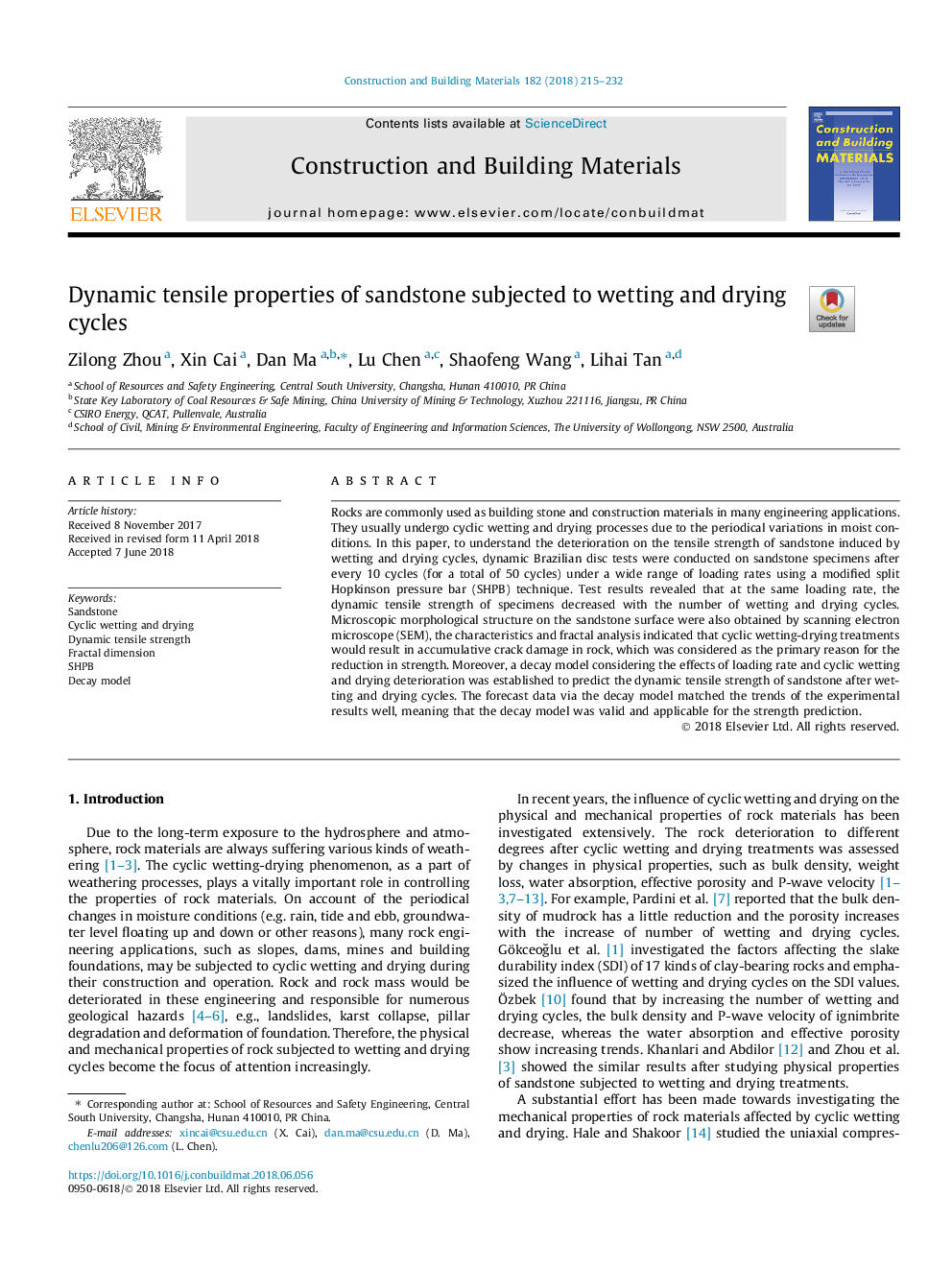| Article ID | Journal | Published Year | Pages | File Type |
|---|---|---|---|---|
| 6712138 | Construction and Building Materials | 2018 | 18 Pages |
Abstract
Rocks are commonly used as building stone and construction materials in many engineering applications. They usually undergo cyclic wetting and drying processes due to the periodical variations in moist conditions. In this paper, to understand the deterioration on the tensile strength of sandstone induced by wetting and drying cycles, dynamic Brazilian disc tests were conducted on sandstone specimens after every 10 cycles (for a total of 50 cycles) under a wide range of loading rates using a modified split Hopkinson pressure bar (SHPB) technique. Test results revealed that at the same loading rate, the dynamic tensile strength of specimens decreased with the number of wetting and drying cycles. Microscopic morphological structure on the sandstone surface were also obtained by scanning electron microscope (SEM), the characteristics and fractal analysis indicated that cyclic wetting-drying treatments would result in accumulative crack damage in rock, which was considered as the primary reason for the reduction in strength. Moreover, a decay model considering the effects of loading rate and cyclic wetting and drying deterioration was established to predict the dynamic tensile strength of sandstone after wetting and drying cycles. The forecast data via the decay model matched the trends of the experimental results well, meaning that the decay model was valid and applicable for the strength prediction.
Related Topics
Physical Sciences and Engineering
Engineering
Civil and Structural Engineering
Authors
Zilong Zhou, Xin Cai, Dan Ma, Lu Chen, Shaofeng Wang, Lihai Tan,
